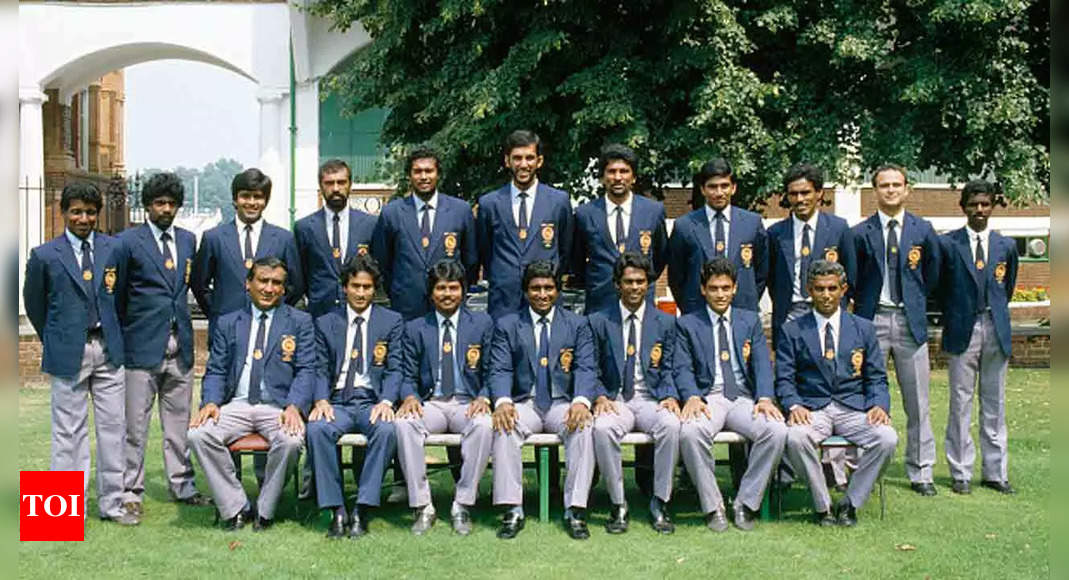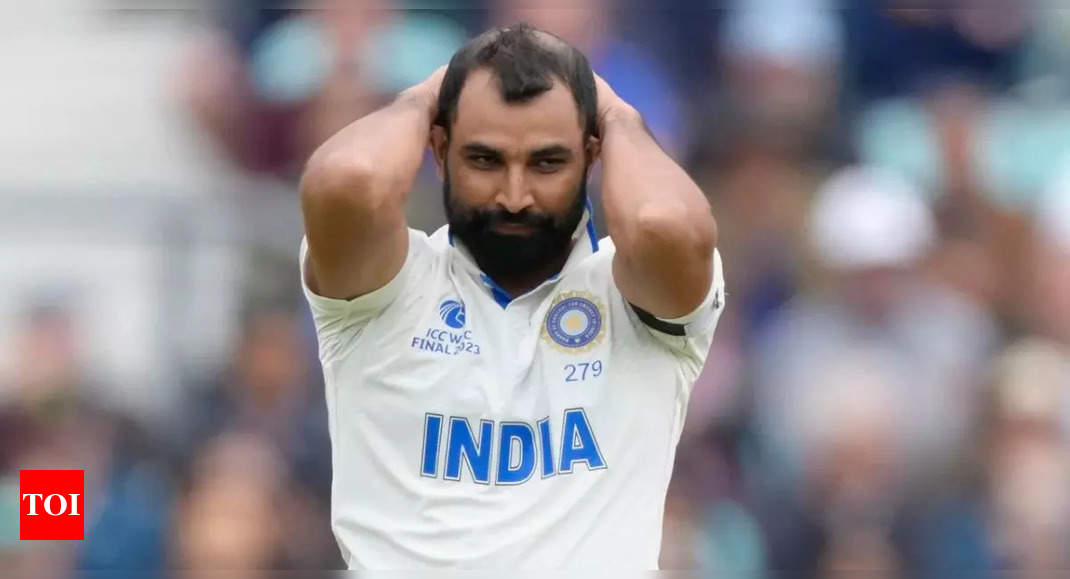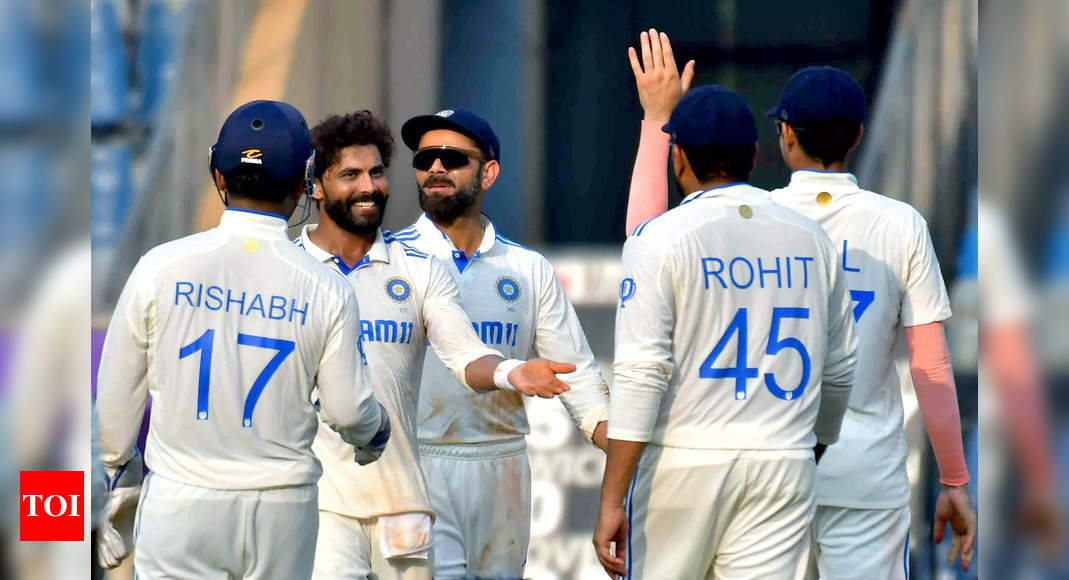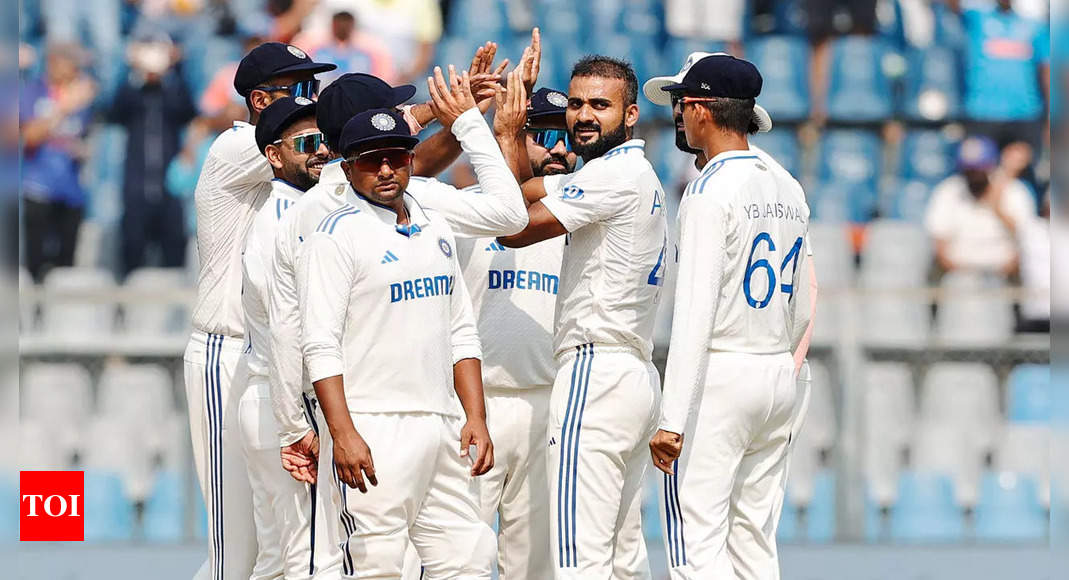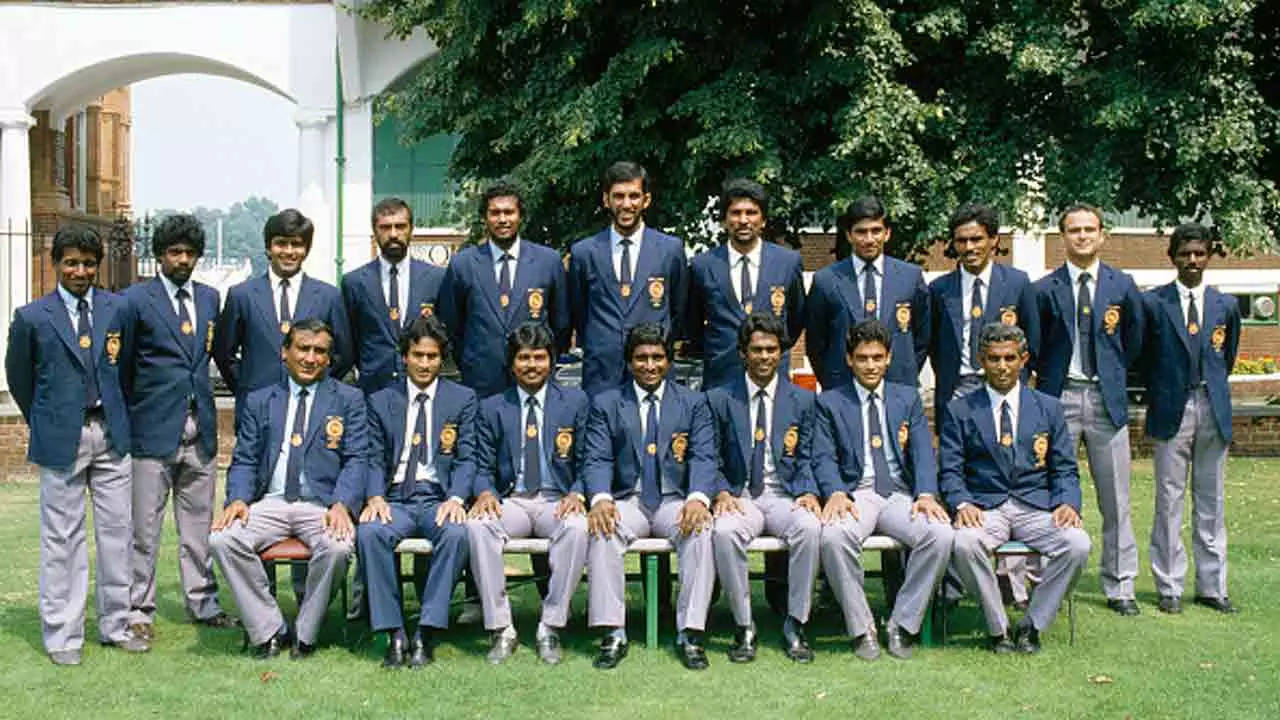
NEW DELHI: When Sri Lanka made their debut at the “Home of Cricket” in 1984, things were significantly different from how they are now playing the second Test against England at Lord’s.
Still a young Test team, the tourists surprised everyone by dominating a drawn one-off match, declaring 491-7 in their opening innings, powered by an outstanding 190 from Sidath Wettimuny.
Recalling the scene forty years later, the then 28-year-old opener said it was a historic event for both his country and himself.
“England is the home of cricket,” Wettimuny told AFP in an interview at Lord’s. “We were very keen to show up and do something decent so that the world took notice of us.”
In an apparently uncomfortable occurrence, Tamil demonstrators stormed the playing area before a ball was bowled, delaying the start of the Test.
Wettimuny, however, insisted: “That helped me tremendously. Not knowing what it was at first, I gradually moved towards the slip cordon because I was scared to be alone in the middle.
“They (the demonstrators) were shouting and the (England) players asked me what this was all about and in that two or three minutes of conversation with them, I think it was like the fizz in a soda bottle going out.
“I just forgot about cricket, forgot about batting and I was relaxed for a few minutes and then when I betted I just felt nice and relaxed.”
With a string of perfect square-drives, Wettimuny punished an England attack led by Ian Botham several times.
None more so than Wettimuny and his brothers, Sri Lankan cricketers have received their customary English education for a considerable amount of time.
“I’ll tell you, my father has to be given all the credit,” said Wettimuny. “He was a huge cricket enthusiast — in fact he built the first indoor net in Sri Lanka.
“And he was a fan of CB Fry (the 19th/20th century England batsman). He made us read CB Fry’s ‘On the Art of Batting’. My goodness, he used to grill us on that.
“And he wanted us to play correct cricket.”
Despite the present England team’s aggressive Bazball strategy, the 1984 Sri Lankan team featured a captain named Duleep Mendis who was a really aggressive batsman.
Mendis, who made 111, was diminutive but strong, hitting Botham bouncers for lofty sixes multiple times. When he fell for 94 in the second innings, the Sri Lankan captain was only a few runs short of reaching another hundred.
“He was a phenomenal player when he got going,” said Wettimuny of Mendis.
“The instruction I got from him at the start of play was ‘you bat through, you just hold your end’. It was very nice just to sit back and watch Duleep take the attack apart.”
Wettimuny was so obedient to his captain’s commands that he batted for almost 11 hours before cramps caused him to be out 10 runs short of a double century.
“People say, weren’t you unhappy about what you didn’t get? I just say I was happy with what I got,” explained Wettimuny.
Many from an England team that had been ‘blackwashed’ 5-0 in a Test series earlier in 1984 by a West Indies team that included fast bowlers like Malcolm Marshall, Michael Holding, and Joel Garner were not looking forward to a one-off match against Sri Lanka.
However, England’s fast Jonathan Agnew saw an opening.
“I was very excited because it was just my second Test,” Agnew told AFP.
“But I was aware my team-mates were absolutely beaten up, they had had a very torrid time, there’d been a lot of injuries, nasty injuries, and they’d just been bombed, they were just out of it really.”
Agnew, now the BBC’s long-serving cricket correspondent, added: “Sidath played really, really well, and he’s become a good friend since. He batted immaculately and Duleep Mendis murdered ‘Beefy’ (Botham).”
Another noteworthy aspect of the match was Arjuna Ranatunga, who at the age of 20 made an astounding 84.
Ranatunga would go on to guide Sri Lanka to World Cup victory in 1996.
“They’ve hardened up a lot,” said Agnew. “They played a bit like gentlemen then. When they first appeared, they sounded a bit old-fashioned, and played a bit old-fashioned.
“But Ranatunga really sharpened them up and made them a fighting force.”
Still a young Test team, the tourists surprised everyone by dominating a drawn one-off match, declaring 491-7 in their opening innings, powered by an outstanding 190 from Sidath Wettimuny.
Recalling the scene forty years later, the then 28-year-old opener said it was a historic event for both his country and himself.
“England is the home of cricket,” Wettimuny told AFP in an interview at Lord’s. “We were very keen to show up and do something decent so that the world took notice of us.”
In an apparently uncomfortable occurrence, Tamil demonstrators stormed the playing area before a ball was bowled, delaying the start of the Test.
Wettimuny, however, insisted: “That helped me tremendously. Not knowing what it was at first, I gradually moved towards the slip cordon because I was scared to be alone in the middle.
“They (the demonstrators) were shouting and the (England) players asked me what this was all about and in that two or three minutes of conversation with them, I think it was like the fizz in a soda bottle going out.
“I just forgot about cricket, forgot about batting and I was relaxed for a few minutes and then when I betted I just felt nice and relaxed.”
With a string of perfect square-drives, Wettimuny punished an England attack led by Ian Botham several times.
None more so than Wettimuny and his brothers, Sri Lankan cricketers have received their customary English education for a considerable amount of time.
“I’ll tell you, my father has to be given all the credit,” said Wettimuny. “He was a huge cricket enthusiast — in fact he built the first indoor net in Sri Lanka.
“And he was a fan of CB Fry (the 19th/20th century England batsman). He made us read CB Fry’s ‘On the Art of Batting’. My goodness, he used to grill us on that.
“And he wanted us to play correct cricket.”
Despite the present England team’s aggressive Bazball strategy, the 1984 Sri Lankan team featured a captain named Duleep Mendis who was a really aggressive batsman.
Mendis, who made 111, was diminutive but strong, hitting Botham bouncers for lofty sixes multiple times. When he fell for 94 in the second innings, the Sri Lankan captain was only a few runs short of reaching another hundred.
“He was a phenomenal player when he got going,” said Wettimuny of Mendis.
“The instruction I got from him at the start of play was ‘you bat through, you just hold your end’. It was very nice just to sit back and watch Duleep take the attack apart.”
Wettimuny was so obedient to his captain’s commands that he batted for almost 11 hours before cramps caused him to be out 10 runs short of a double century.
“People say, weren’t you unhappy about what you didn’t get? I just say I was happy with what I got,” explained Wettimuny.
Many from an England team that had been ‘blackwashed’ 5-0 in a Test series earlier in 1984 by a West Indies team that included fast bowlers like Malcolm Marshall, Michael Holding, and Joel Garner were not looking forward to a one-off match against Sri Lanka.
However, England’s fast Jonathan Agnew saw an opening.
“I was very excited because it was just my second Test,” Agnew told AFP.
“But I was aware my team-mates were absolutely beaten up, they had had a very torrid time, there’d been a lot of injuries, nasty injuries, and they’d just been bombed, they were just out of it really.”
Agnew, now the BBC’s long-serving cricket correspondent, added: “Sidath played really, really well, and he’s become a good friend since. He batted immaculately and Duleep Mendis murdered ‘Beefy’ (Botham).”
Another noteworthy aspect of the match was Arjuna Ranatunga, who at the age of 20 made an astounding 84.
Ranatunga would go on to guide Sri Lanka to World Cup victory in 1996.
“They’ve hardened up a lot,” said Agnew. “They played a bit like gentlemen then. When they first appeared, they sounded a bit old-fashioned, and played a bit old-fashioned.
“But Ranatunga really sharpened them up and made them a fighting force.”
